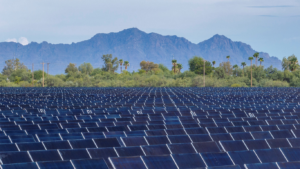The federal government isn’t going to tap the Missouri River to slake the thirst of a drought-parched Southwest, the government’s top water official said Wednesday.
But rising demand and falling supply have water managers in the arid West considering a host of other options to deal with dire projections that the Colorado River — the main water supply for a region larger than the country of France — won’t be able over the next 50 years to meet demands of a regional population now about 40 million and growing.
Interior Secretary Ken Salazar issued what he termed “a call to action” with a three-year study of the river, its flows and its ability to meet the future needs of city-dwellers, Native Americans, businesses, ranchers and farmers in seven Western states.
“We are in a troubling trajectory in the Colorado River basin, as well as the Rio Grande basin,” Salazar told reporters on a conference call outlining the math in the findings of the Colorado River Basin Water Supply and Demand Study.
Salazar, who oversees water managers and dam operators at the federal Bureau of Reclamation, dismissed as politically and technically impractical some ideas in the study, including piping water from the nation’s heartland or towing Arctic icebergs south to help such thirsty U.S. cities as Denver, Los Angeles, Las Vegas and Phoenix.
He said he wanted to focus instead on “solutions that are out there that will help us.”
“There is no one solution that is going to meet the needs of this challenge,” Salazar said. “We need to reduce our demand through conservation. We also need to augment supply with practical measures.”
Salazar and Bureau of Reclamation officials warned that the Colorado River’s historical 15 million acre-feet per year flow has been reduced by 12 years of drought to about 12 million acre-feet. Officials say an acre-foot can meet the water needs of up two families per year.
Water interests and the states of Arizona, California, Colorado, New Mexico, Nevada, Utah, and Wyoming together lay claim to all the water in the river and then some.
Mexico also has a stake in the river, and officials last month set new rules to share Colorado River water south of the border and let Mexico store water in Lake Mead near Las Vegas.
The study projects that by 2060 the river flow could fall 3.2 million to 8 million acre-feet short of regional needs.
A “very believable estimate” using climate change scenarios projects the river flow increasing to just 13.7 million acre-feet per year by 2060, said Kay Brothers, a former Southern Nevada Water Authority executive in Las Vegas who co-managed the study.
“We’re going to have problems in the future meeting the demands of the Colorado River basin,” Brothers said. “We have to begin now starting to put measures in place to meet the imbalance and prepare for a drier future.”
Even before the report was released, some advocates criticized it as a “fundamentally flawed,” and based on inflated projections of the amount of water in the river and the number of people in the region.
“States cooked the books to show higher demand for water consumption to set up a federal bailout on expensive water projects,” said Molly Mugglestone, director of the advocacy group Protect the Flows.




